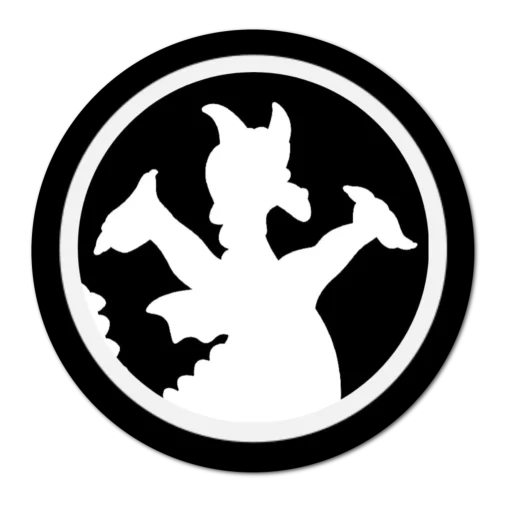(A version of this article was shared with Laughing Place and published on October 30, 2024.)
“Now gather ‘round while I illustrate what happens outside when it gets late…” -Bing Crosby
Spooks and specters and superstitions abound, about a man who went lost and was never found. The seedy story of Ichabod Crane and the Headless Horseman is one that’s been told many times over in American literature and cinema. Disney’s 1949 retelling of the classic 1820 Washington Irving tale just may be the most beloved to date. So this Halloween season, gather ‘round to learn a few fun facts about Disney’s The Legend of Sleepy Hollow.
Two Fabulous Characters
In most haunted circles, the spooky story of Ichabod Crane would take top billing, but when Disney produced an animated version of the tale, Walt himself chose to abbreviate much of the tale’s extensive backstory. Disney paired the film with The Wind in the Willows to be released as one of the studio’s noted “package films.” Together, the short-ish films (together, the films totaled a little over an hour) were bundled under the overarching title The Adventures of Ichabod and Mr. Toad. But at one point during production, the package film was to be titled “Two Fabulous Characters,” until the current name was chosen. Probably a good decision, since “Two Fabulous Characters” could be misunderstood to refer to Ichabod Crane and the Headless Horseman.
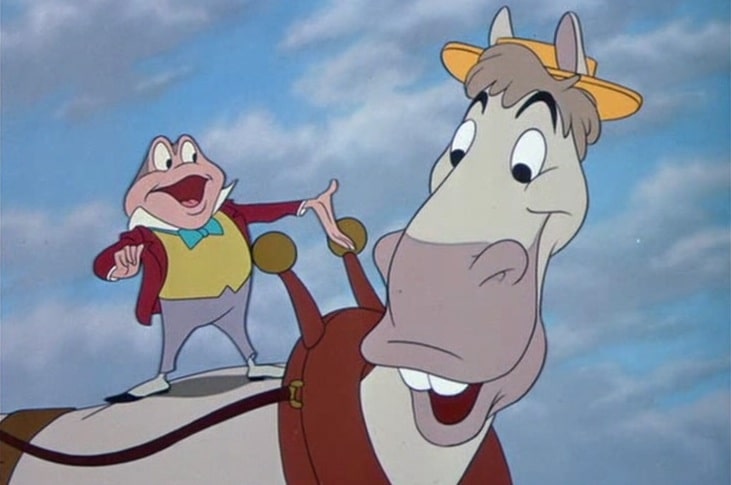
Speaking of two fabulous characters, the film was directed by Disney Legend Clyde Geronimi and animator/director Jack Kinney. Geronimi contributed to over 50 animated short films, including the Oscar-winning Pluto Lends a Paw, as well as iconic films such as Cinderella, Alice in Wonderland, Peter Pan, Lady and the Tramp, and One Hundred and One Dalmatians. Kinney did extensive work on Goofy and Donald Duck shorts, as well as several package films, and the feature films Pinocchio and Dumbo.
Bing Crosby and the Voices of Sleepy Hollow
With one of the smoothest voices ever to grace the radio waves and the silver screen, Bing Crosby was at his peak in the 1940s. In addition to his golden voice, Bing starred in a handful of films which established him as a box office giant. “The Old Groaner” had made a name for himself in the Christmas music genre, crooning out classics like “Silent Night,” “White Christmas,” and “It’s Beginning to Look a lot like Christmas.” So it seemed a match made in holiday heaven that Bing took a turn at Halloween.
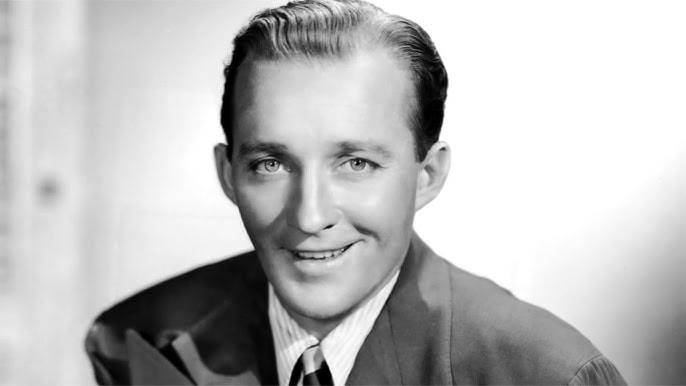
Not only did Bing sing three songs in The Legend of Sleepy Hollow; he also narrated the whole film. Fans from an earlier generation of American music may recognize the chorus supporting Bing in the film. They are the Rhythmaires – a choral group often featured in Bing’s radio program in the 1940s and 1950s.
The most memorable song from the film is “The Headless Horseman.” Bing recorded this Halloween classic as a family affair, inviting his four sons – Gary, Phillip, Dennis, and Lindsay – to record the song with him.
But Bing Crosby didn’t perform every voice in the film. A few moments in the story lent themselves to other voicework. If the scream of Ichabod Crane sounds familiar, it’s because Disney Legend Pinto Colvig – the voice of Goofy and Pluto – provided his trademark shrill scream. Fellow Disney Legend Clarence Nash – the voice of Donald Duck – chipped in as the voice of Ichabod’s horse Gunpowder. The most frightening sound in the film may be the menacing scream of the Headless Horseman himself. You can thank Billy Bletcher if that scream gave you any sleepless nights.
Sleepy Hollow and Tarrytown
The Legend of Sleepy Hollow isn’t entirely a legend. The “tranquil little village of Sleepy Hollow” itself is a very real place. But the story starts in the village of Tarrytown – an actual former Dutch settlement in Westchester County, New York, located about 25 miles north of New York’s Midtown Manhattan neighborhood. Walt Disney himself personally visited Tarrytown during the creation of the film, wanting to experience the legend and culture of the area for himself.
Head just a bit further north of Tarrytown, and you’d once come upon the nearby village of North Tarrytown. Herein lies the fabled Sleepy Hollow, which resides in literature and film as the name of a fictional village. In speaking about his most famous work of literature, Washington Irving applied the name “Sleepy Hollow Country” to a broad expanse of New York state’s Hudson River Valley – sort of an informal moniker. But in 1996, the village of North Tarrytown was officially renamed “Sleepy Hollow.” Washington Irving himself is buried in the Sleepy Hollow Cemetery – one of many sites in the area protected under the United States government’s National Register of Historic Places.
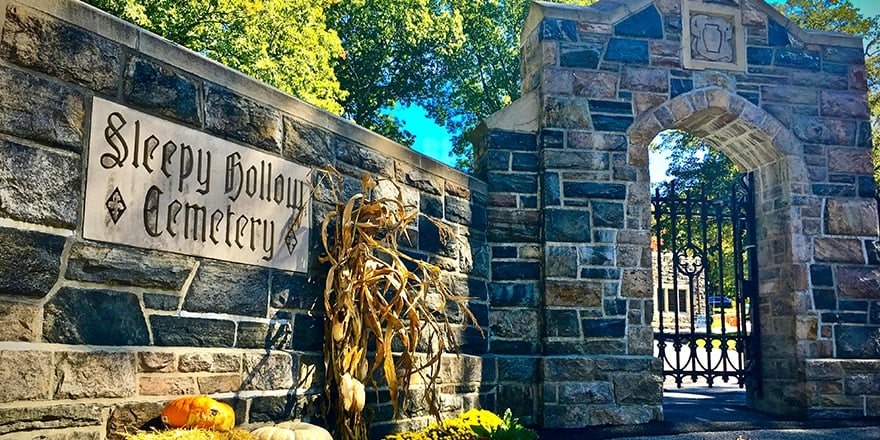
With Tarrytown having been founded by Dutch settlers in the 17th century, there are several buildings and features illustrated in the Disney classic paying homage to the surroundings. The most notable is a church shown during Bing Crosby’s opening narration (and also shown at the end when Brom Bones and Katrina Van Tassel get married). The church is drawn to look like the actual Old Dutch Church in the actual village of Sleepy Hollow, which was built in the late 1600s and still stands there today.
Love Triangle
On the surface, one might see Ichabod Crane as the tragic hero, with the Headless Horseman and Brom Bones as the clear villains. But dig a little deeper and you’ll find the intentions aren’t so clear. Let’s examine the characters in the story’s love triangle.
Ichabod Crane

The somewhat unlikable “hero” of the story wanders into town seeking any opportunity to advance his personal agenda of gaining wealth and status. Ichabod’s considerable talent thwarts rival Brom Bones at every turn, and he’s only too amused about it all. He can easily be viewed as an antagonist of sorts, though his fate at the hands of the Headless Horseman earns him sympathetic points.
Disney Legend (and member of Walt’s “Nine Old Men”) Frank Thomas animated Ichabod, and fellow Disney Legend Pinto Colvig provided his cowardly scream.
In Washington Irving’s original story, Ichabod proposes marriage to Katrina Van Tassel following her father’s Halloween party. Katrina breaks Ichabod’s heart by turning him down, after which he upsettingly heads out into the night. Walt made the decision to keep the subject matter a little lighter, opting to simply follow Ichabod out of the party for his jittery ride home.
Speaking of Ichabod’s tragic ride home; in the film, Bing Crosby states that the Headless Horseman’s power ends when “you cross that bridge.” During Washington Irving’s time, it was a common superstition that no supernatural being was able to cross over running water. This was also demonstrated in The Lord of the Rings: The Fellowship of the Ring, when the Ringwraiths are unable to pursue Frodo Baggins beyond the edge of water.
Katrina Van Tassel
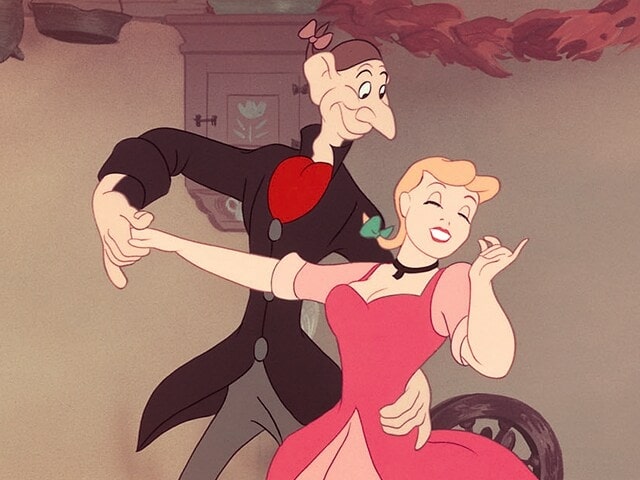
“Blooming, plump as a partridge, ripe, melting, and rosy-cheeked.”
When Bing Crosby used these words to describe Katrina, he may as well have been talking about Grace Martin or Slue-Foot Sue – two existing Disney female characters after which Katrina was modeled. Grace Martin appeared in the Martins and the Coys segment of the 1946 package film Make Mine Music, and Slue-Foot Sue was immortalized in the Pecos Bill segment of the 1948 package film Melody Time. In order to save money and time during production, Disney animators used the model sheets for these two characters in animating Katrina.
Katrina is the only lead character in Disney animation of Dutch origin. Despite the fact that she only has one brief line of dialogue in the story (“Yoo hoo!” – spoken off-screen), Katrina still manages to hold a crowd, and exerts an enormous influence over both Ichabod Crane and Brom Bones. While her two would-be suitors angle for her favor, could Katrina be considered an unwitting antagonist in the film?
Brom Bones
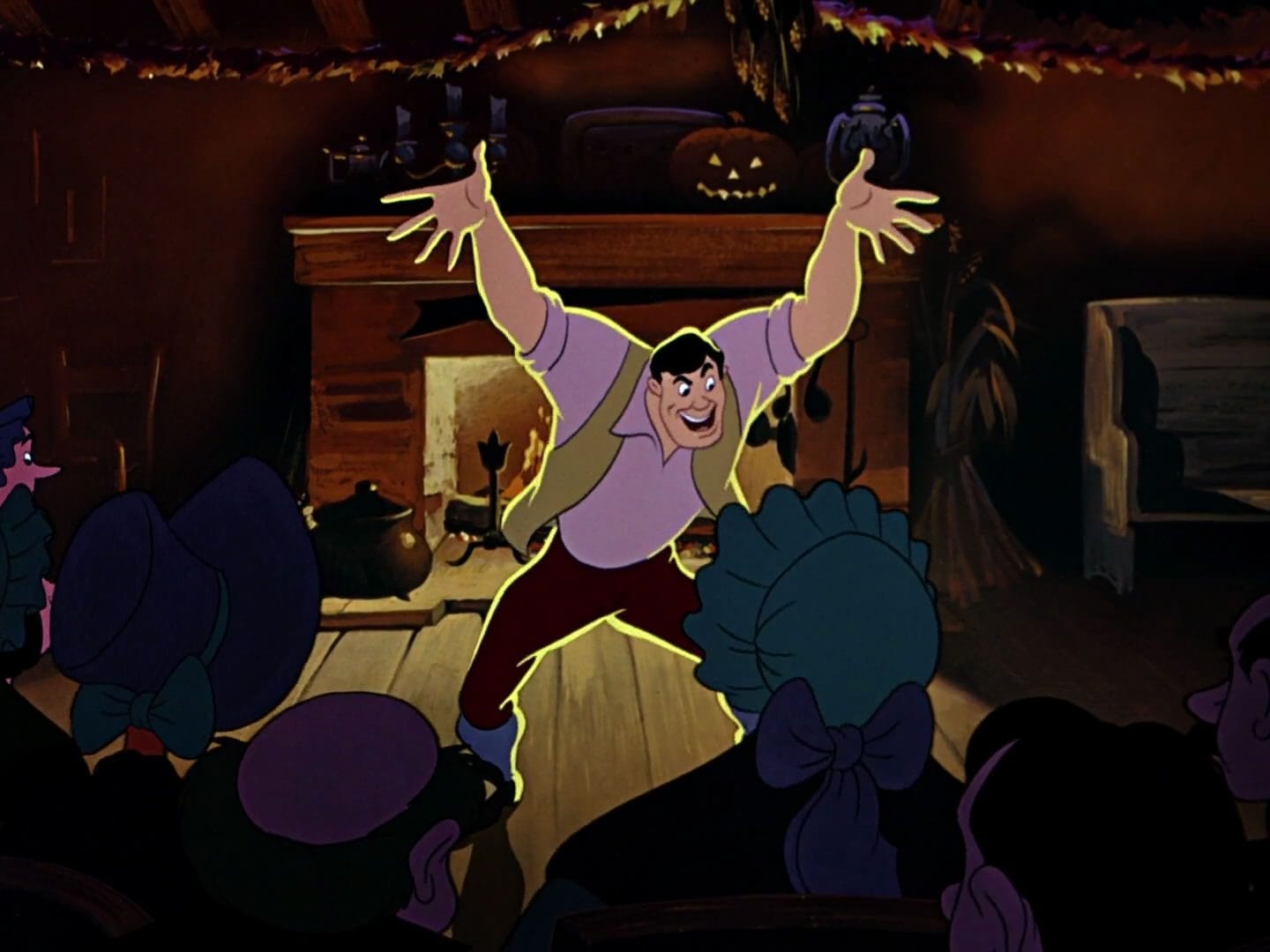
Brom is a classic example of an apparent “secondary villain” in the film. He’s not the ultimate big-bad, but he certainly stokes the fire, scaring Ichabod into a psychological frenzy at the Van Tassel Halloween party. Neither the Disney film nor Washington Irving’s original story are decisive on what truly happened to Ichabod after he left the party that night. Irving’s story strongly suggests that the Headless Horseman was Brom in disguise. The Disney film leaves this possibility much more up in the air.
Does Brom Bones feel a little familiar? His character model was a direct inspiration for Gaston in 1991’s Beauty and the Beast. Brom also inspired a lesser known character Sir Kay, one of the two anti-heroes from 1963 film The Sword in the Stone.
The Headless Horseman
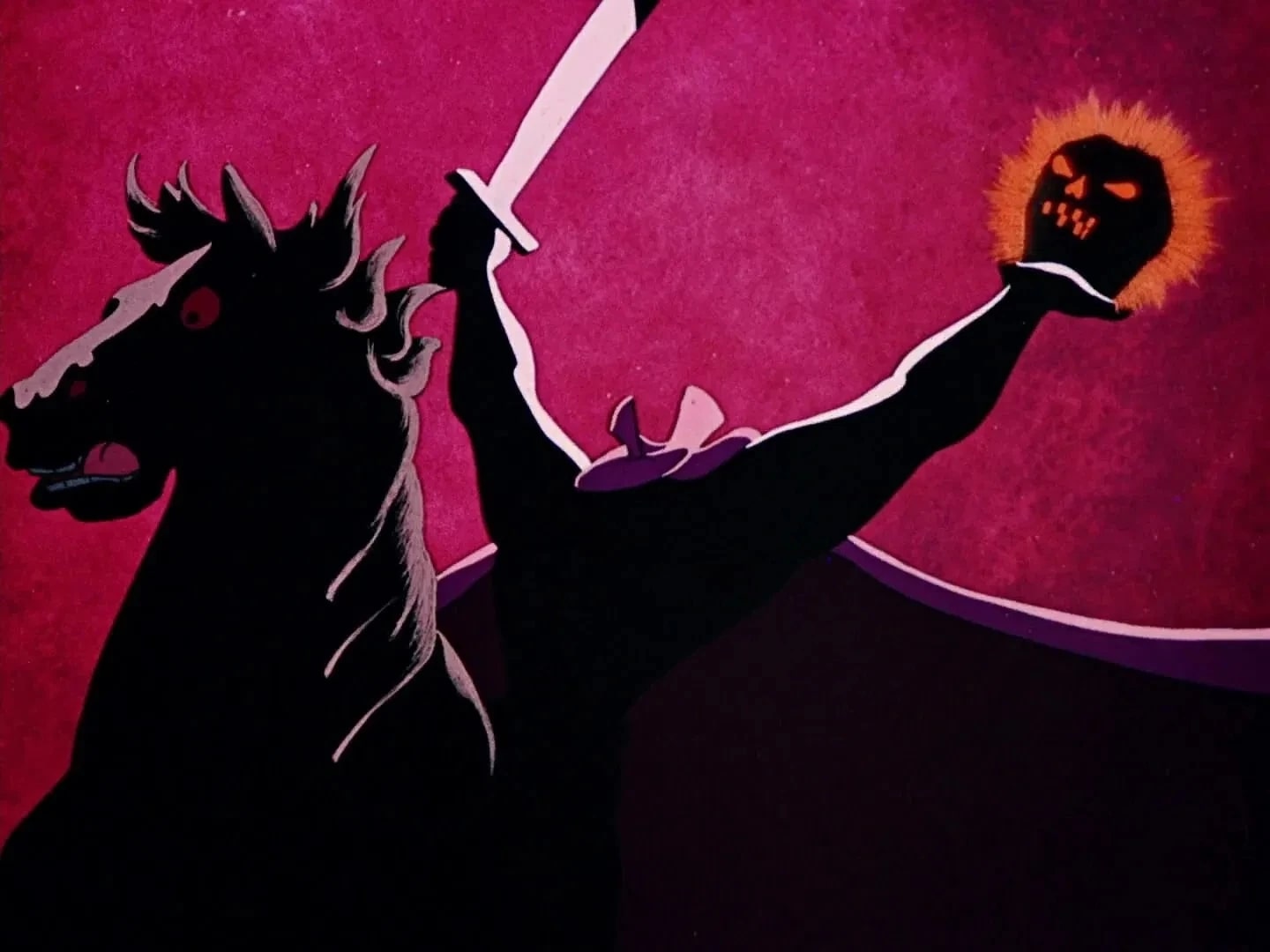
The sadistic laugh of the Headless Horseman is one of the most frightening sounds in any animated Disney film. This iconic Halloween villain is one of very few Disney villains – if not the only one – to actually “win” over the protagonist. But did the Headless Horseman actually kill Ichabod? Perhaps he only scared him away, never to return, as Bing Crosby theorized in his narration. Was the Horseman actually Brom Bones in disguise? The film, much like Irving’s original story, leaves these points up for debate, furthering the appeal of the moment throughout pop culture.
The Disney film included no backstory for the Horseman. But Irving’s original story notes him as a Hessian soldier (German mercenaries who fought for the British during the American Revolution) who was decapitated by a cannonball during the Revolutionary War. According to a tour of the Old Dutch Church’s cemetery in Sleepy Hollow, the body of the Hessian was buried in an otherwise normal patch of grass. This was a measure of respect given to the soldier as gratitude for him saving the life of the infant daughter of a wealthy family, despite both being on the opposite side during the American Revolution. The name of that family was, not-so-coincidentally, “van Tassel.”
During the creation of Disneyland’s Haunted Mansion, the Headless Horseman was once considered to be a focal point of the attraction’s graveyard scene. He never made it to the Mansion, but he did make it to television show The Wonderful World of Disney, on the same Sunday night that the Beatles made their first appearance on national TV, on The Ed Sullivan Show. Ouch, that’s a tough draw!
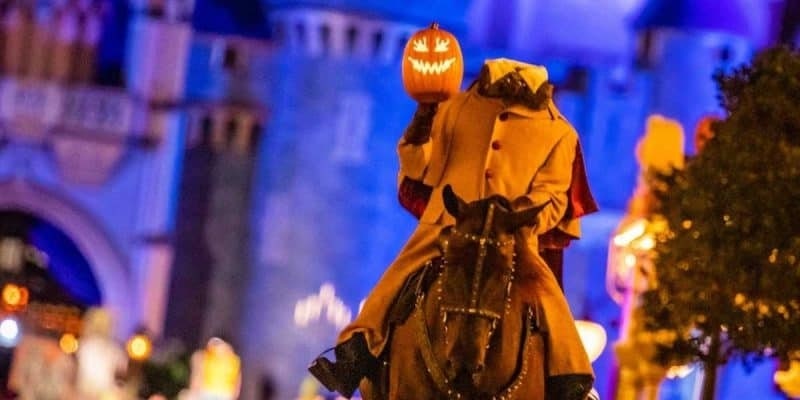
Fear not! Fans of the Headless Horseman can watch the iconic villain gallop through the streets of Magic Kingdom every year at Mickey’s Not So Scary Halloween Party.
Despite Washington Irving’s classic tale The Legend of Sleepy Hollow not actually being set on Halloween night, the Headless Horseman has become forever linked to All Hallow’s Eve. So watch yourself on your way home from that spooky scary party. And always remember “Happy Halloween!”
Join the creepy conversation on social: Instagram Facebook X
Sources:
